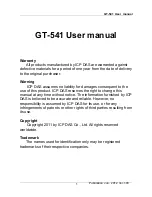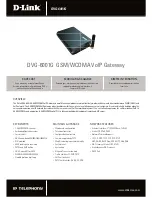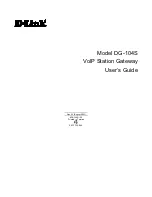
RADIUS-Based Policing
Information About RADIUS-Based Policing
3
RADIUS uses only Attribute 252 in a CoA message when deactivating a service. RADIUS sends the
same information in Attribute 252 that was used for service activation, except that service deactivation
uses 0c in the syntax instead of the 0b parameter used for service activation.
CoA Messages
252 0xC "service(parameter1=value,parameter2=value,...)"
VSA 252 has the above syntax for service deactivation.
Cisco VSA 1
RADIUS uses a vendor-specific attribute (VSA) 1 command to modify the active QoS policy on a
session. This VSA has the following format:
av-pair = "policy-type=command 9 parameter1 ,...,parametern"
Use the following Cisco VSA 1 format to add and remove classes and QoS actions to and from the QoS
policy that is currently active on a session:
qos-policy-in=add-class(target,(class-list),qos-actions-list)
qos-policy-out=add-class(target,(class-list),qos-actions-list)
qos-policy-in=remove-class(target,(class-list))
qos-policy-out=remove-class(target,(class-list))
Before the ISG can construct a policy using the policing parameters specified in the RADIUS message,
a QoS policy must be active on the session. If a QoS policy is not active in the specified direction, the
ISG does not create the policy.
When implementing the changes specified in the Cisco VSA, the ISG does not make the changes to the
originally configured QoS policy on the ISG device. Instead, the ISG copies the active QoS policy for
the session and then makes the required changes to the policy copy, which is referred to as a transient
policy. The originally configured QoS policy on the ISG device is not changed.
The following sections describe the Cisco VSA 1 commands used to automatically modify policing
parameters of active policies:
•
Add-Class Primitive, page 3
•
Remove-Class Primitive, page 4
Add-Class Primitive
To add or modify QoS actions to a traffic class, use the add-class primitive. This attribute has the
following format:
qos-policy-in=add-class(target,(class-list),qos-actions-list)
qos-policy-out=add-class(target,(class-list),qos-actions-list)
•
target field— indicates the QoS policy to be modified. Currently, the only valid value for this field
is sub, which indicates the active QoS policy attached to the subscriber session. The Access-Accept
or CoA message that includes this attribute must be targeting a subscriber session.
•
class-list field—A list of class names enclosed in parentheses that identifies the traffic class to which
the specified QoS action applies. The class names you specify must be either user-configured class
maps or the system-generated class-default class. The order in which you specify the class names
indicates the hierarchical level of the class within the QoS policy.
Содержание IOS XE
Страница 14: ...About Cisco IOS XE Software Documentation Additional Resources and Documentation Feedback xii ...
Страница 28: ...Using the Command Line Interface in Cisco IOS XE Software Additional Information xiv ...
Страница 36: ...Intelligent Services Gateway Features Roadmap 8 ...
Страница 46: ...Overview of ISG Feature Information for the Overview of ISG 10 ...
Страница 70: ...Configuring ISG Control Policies Feature Information for ISG Control Policies 24 ...
Страница 128: ...Configuring ISG Access for IP Subscriber Sessions Feature Information for ISG Access for IP Subscriber Sessions 44 ...
Страница 136: ...Configuring MQC Support for IP Sessions Feature Information for MQC Support for IP Sessions 8 ...
Страница 194: ...Configuring ISG Policies for Automatic Subscriber Logon Feature Information for ISG Automatic Subscriber Logon 12 ...
Страница 224: ...Configuring ISG Subscriber Services Feature Information for ISG Subscriber Services 20 ...
Страница 336: ...Configuring ISG Integration with SCE Feature Information for Configuring ISG Integration with SCE 16 ...
Страница 344: ...Service Gateway Interface Feature Information for Service Gateway Interface 8 ...
















































